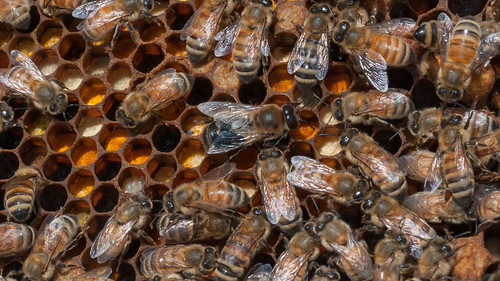
This post is part of the Science Tuesday feature series on the USDA blog. Check back each week as we showcase stories and news from USDA’s rich science and research portfolio.
Every day, National Agricultural Statistics Service (NASS) statisticians work hard to produce timely, accurate and useful statistics to U.S agriculture. In addition to producing hundreds of reports each year on crops, livestock and economic indicators for the agriculture industry, NASS collects and reports annual data for honey bee colonies. Historically, we’ve only surveyed operations or farms with five or more colonies, but in 2015 we expanded the survey to cover operations of all sizes. As a statistician who is also a beekeeper, I am pleased to provide valuable information about honey as a public service and decision-making tool.
The annual honey report publishes the maximum number of honey producing colonies, honey yield, value of honey production, and honey price by color class and marketing channel. In addition to bee and honey surveys, the Census of Agriculture, which is collected every five years, publishes number of operations, number of colonies, pounds of honey produced and value produced. NASS has data on honey production dating back to 1986. Current honey and honey bee data is available on the NASS website.
Used primarily as a sweetener today, honey comes in a variety of colors and flavors depending on the region and floral source. A few flavors produced in the U.S. include wildflower, alfalfa, orange, clover, safflower, wild berry, buckwheat, mint and carrot.
North Dakota is currently the single largest producer of honey in the U.S. In 2015, U.S. honey production from producers with five or more colonies totaled 157 million pounds harvested from 2.7 million colonies. The average yield per colony averaged 59 pounds of honey. That same year, smaller producers with less than five colonies produced a total of 720,000 pounds of honey harvested from 23,000 colonies. Their average yield per colony was 31 pounds.
Keep an eye on the NASS website for the release of new honey data on March 22.

